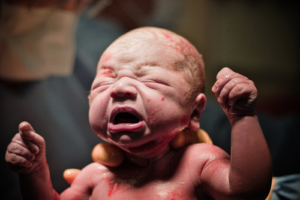 Many women who have given birth by Cesarean section are delighted to discover that they might qualify for a vaginal birth with their next child. The desire to have this kind of birth is not the only requirement though. Is a vaginal birth after cesarean (VBAC) medically right for you? And, most of all, does a VBAC put you and your unborn child at risk of birth injuries?
Many women who have given birth by Cesarean section are delighted to discover that they might qualify for a vaginal birth with their next child. The desire to have this kind of birth is not the only requirement though. Is a vaginal birth after cesarean (VBAC) medically right for you? And, most of all, does a VBAC put you and your unborn child at risk of birth injuries?
The Physical and Mental Toll of a C-Section
There are physical, emotional, and mental components to delivering a child. Any mother who has an emergency C-section can feel robbed of the natural birth experience and want her next birth to go differently. Any mother who undergoes a planned C-section because of a pregnancy complication may want to try a VBAC with the next complication-free baby.
Not every obstetrician supports VBACs. As with any birthing matter, it only takes a bit of legwork to find a doctor who gels with a mother’s desired birth plans. However, it’s essential to make sure that the wanted plans are the safest plans. The doctor should ensure that a woman’s health and well-being, and that of her baby, comes first, even if that conflicts with her values and wants.
When related or unrelated health issues stand in the way of a vaginal delivery, a VBAC may not be the medically recommended route to take to labor and delivery. Demanding that you have the option to try a VBAC – or being medically advised by a doctor that it’s OK to try when it is not advisable – can lead to disaster.
The Risks of a VBAC
There are many physical reasons women want to try for a VBAC. A vaginal birth generally has a less taxing recovery than a c-section. Having a VBAC is better for any future deliveries because it reduces the chances that the placenta will attach to the previous c-section scar and potentially cause hemorrhaging during delivery. The more cesarean section surgeries a woman has, the more difficult they can become because of scar tissue.
Nevertheless, a VBAC comes with its own complications:
- Higher risk of uterine rupture than with a planned repeat cesarean.
- If the uterus does rupture, an emergency c-section will be necessary.
- Any delay in performing the c-section can lead to birth asphyxia and even infant death.
- For the mother, uterine rupture could lead to extreme blood loss and chance of a hysterectomy.
If a baby suffers from oxygen loss during birth, the side effects could be extreme and lifelong, causing everything from cerebral palsy and epilepsy to developmental delays and motor disorders.
Did You Choose the Right Obstetrician?
Even with all these scary statistics, the chances of success during a VBAC remain quite high. The key is to work with an obstetrician who honestly evaluates each woman to determine if she is a good candidate for a VBAC based on her previous pregnancy and delivery history. The doctor must also be comfortable with the situation and prepared to manage the circumstances from every angle, whether a woman goes into pre-term labor or ends up needing an emergency c-section.
Did you or your baby suffer complications after a VBAC? You may have a medical malpractice case. Contact the Michigan personal injury attorneys at Thurswell Law to get the compensation you deserve. Schedule a consultation by calling (248) 354-2222 today. We do not charge any fees until we win.







